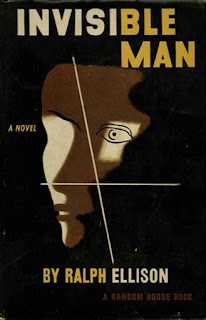Book Review: The Invisible Man
by Barbara Hutto, Government Documents Department, Central Library
The Invisible Man
Ralph Ellison
If you haven’t read this literary novel that won the National Book Award during the 1950s, you might want to look at the narrator’s view of New York City in the late 1940s. In Ralph Ellison's The Invisible Man, the narrator, a young African American man, seeks an education in spite of his poverty. It is more than a story of race. Within in the story, the tight-fisted wealthy look down at and sometimes abuse those with less. The invisible man lives a life underground, below the subway lines with light bulbs hooked up to the city’s grid to stay warm. Even other African Americans turn their eyes from him because of his darkness and poverty.
In the speaker’s recollection 25 years later, he gives advice from his older self to anyone who is like his younger self: Keep your eyes open to see the possibility of opportunity so it can be discovered, such as winning a scholarship to a college. And the ideal that some people must first have their illusions destroyed so they are disillusioned. Even if it is painful, ultimately, it might be the very best thing that can happen to a person, enabling them to succeed. The novel parallels James Joyce’s A Portrait of the Artist as a Young Man and Booker T. Washington’s essays and speeches.
The Invisible Man
Ralph Ellison
If you haven’t read this literary novel that won the National Book Award during the 1950s, you might want to look at the narrator’s view of New York City in the late 1940s. In Ralph Ellison's The Invisible Man, the narrator, a young African American man, seeks an education in spite of his poverty. It is more than a story of race. Within in the story, the tight-fisted wealthy look down at and sometimes abuse those with less. The invisible man lives a life underground, below the subway lines with light bulbs hooked up to the city’s grid to stay warm. Even other African Americans turn their eyes from him because of his darkness and poverty.
In the speaker’s recollection 25 years later, he gives advice from his older self to anyone who is like his younger self: Keep your eyes open to see the possibility of opportunity so it can be discovered, such as winning a scholarship to a college. And the ideal that some people must first have their illusions destroyed so they are disillusioned. Even if it is painful, ultimately, it might be the very best thing that can happen to a person, enabling them to succeed. The novel parallels James Joyce’s A Portrait of the Artist as a Young Man and Booker T. Washington’s essays and speeches.

Comments